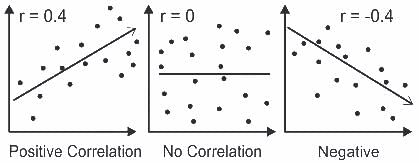TS SET Paper 2 Mock Test - 1 (Commerce) - TS TET MCQ
30 Questions MCQ Test TS SET Mock Test Series 2025 - TS SET Paper 2 Mock Test - 1 (Commerce)
Disruptions in which particular dynamic caused significant impacts on MNCs due to COVID-19?
Which emergency measures introduced by the government impacted international business operations?
A meaningful shift in consumer behavior encouraged MNCs to
If the correlation coefficient is a positive value, then the slope of the regression line
Which of the following is/are true as per the passage?
I. Essar Steel evoked interest even from its promoters when it was put up for sale.
II. Bhushan Steel was acquired by the JSW Group for Rs 32,500 crore.
III. The average recovery rate for the 21 banks (public plus private) was 10.8%.
What is/are the main difference between the NPAs today and the NPAs of 1990s?
I. The NPAs are equally distributed across priority and non-priority sectors today than in 1990s.
II. The NPAs today are concentrated among large corporate borrowers.
III. The NPAs today are more prevalent in Public Sector Banks while in the 1990s they were concentrated in both private and public sector banks.
‘No ideas are ever criticized’ and ‘the more radical the ideas are the better’ – are the rules of which decision making process ?
Direction: For the Assertion (A) and Reason (R) given below, choose the correct alternative.
Assertion (A): When two or more investment proposals are mutually exclusive, ranking the proposals on the basis of IRR, NPV and PI methods may give contradictory results.
Reason (R): The contradictory results in the ranking are due to different dimensions relating to the scale of investments, cash flow patterns and project lives.
________ refers to any direct or indirect interaction customers have with a band, product, service etc.
Assertion (A) : The EXIM policy is liberal, market-oriented and favours global trade.
Reason (R) : GATT has played a significant role in the liberalization of the economy.
Match List-I with List-II

Choose the correct code:
Direction: For the Assertion (A) and Reason (R) given below, choose the correct alternative.
Assertion (A): International business has grown in more recent years at a faster pace than global production.
Reason (R): Growth through trade has increased, but growth through foreign direct investment has not.
The Existence of different currencies is beneficial to private financial institutions because
The short-term analysis of financial statements is mainly concerned with
Gift to an employee by an employer, where the value of the gift is below ______ shall be treated as a tax free perquisite.
The sequence of steps involved in testing a hypotheses are:
A. Select a suitable test statistic
B. Establish critical or rejection region
C. State the null and alternative hypothesis
D. State the level of significance (α)
E. Formulate a decision rule to evaluate the null hypothesis
Choose the correct answer from the options given below
Which of the following economies accrue all the firm in an industry?
|
60 tests
|



















